SEO and Content Marketing Practice Lead
12 tips to improve the performance of your WordPress site
SEO and Content Marketing Practice Lead
This little guide was developed in the aim of helping marketing specialists and managers optimize the performance (speed and SEO) of their WordPress sites.
Ahh, WordPress.
Hard to believe this open source software was founded in 2003. Though it’s really in the last ten years that the use of this CMS seems to have taken off.
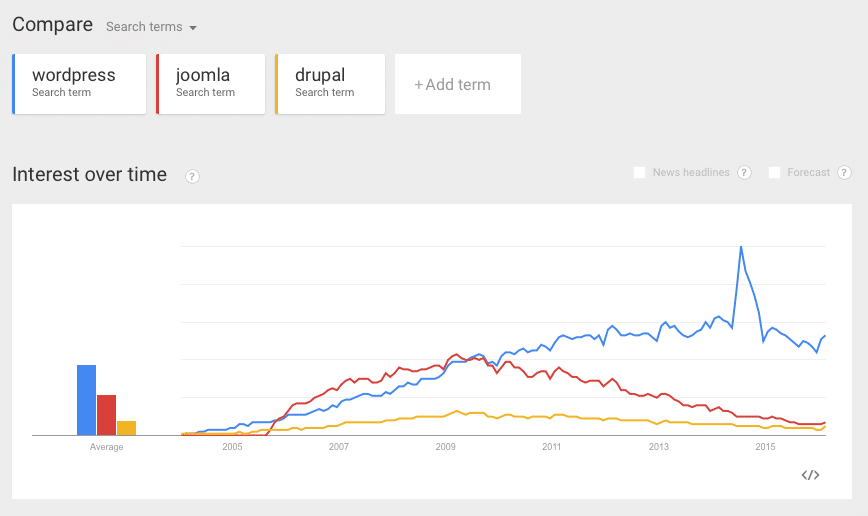
Poor Joomla
With a ton of available themes and extensions, WordPress offers small teams a level of independence that was previously difficult, if not impossible, to achieve.
Unfortunately this flexibility can be a bit of a double-edged sword:
- Too many extensions and you can slow your site down considerably
- Neglect to update your site and you could be exposed to security breaches or gaps in functionality that put you behind your competitors
- Too many custom functions and your marketing team could become dependent on your developers
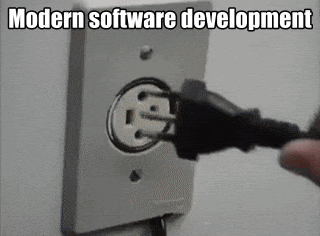
Don’t try to patch your patches
Because of this, a few bad decisions can impact how you rank in search, slow down your site and even limit your flexibility to make rapid changes.
After spending ten years working with WordPress and conducting countless technical audits, there are certain mistakes I see again and again.
Here are 12 tactics I’d recommend to anyone looking to improve their SEO and website governance.

Maintain your website
Category: Common sense
Difficulty: Easy
Time needed: 10 minutes a month
A new car lets you know when you’re due for maintenance.
WordPress lets you know that it’s time to update 19 extensions and upgrade to the latest recommended version.
Don’t overlook the advantages of keeping your website up to date — not only will it be more secure, but it could also allow you to eliminate bugs and inefficient code that might be impacting your performance.
Since the arrival of WordPress 5.5, you can now enable automatic updates.
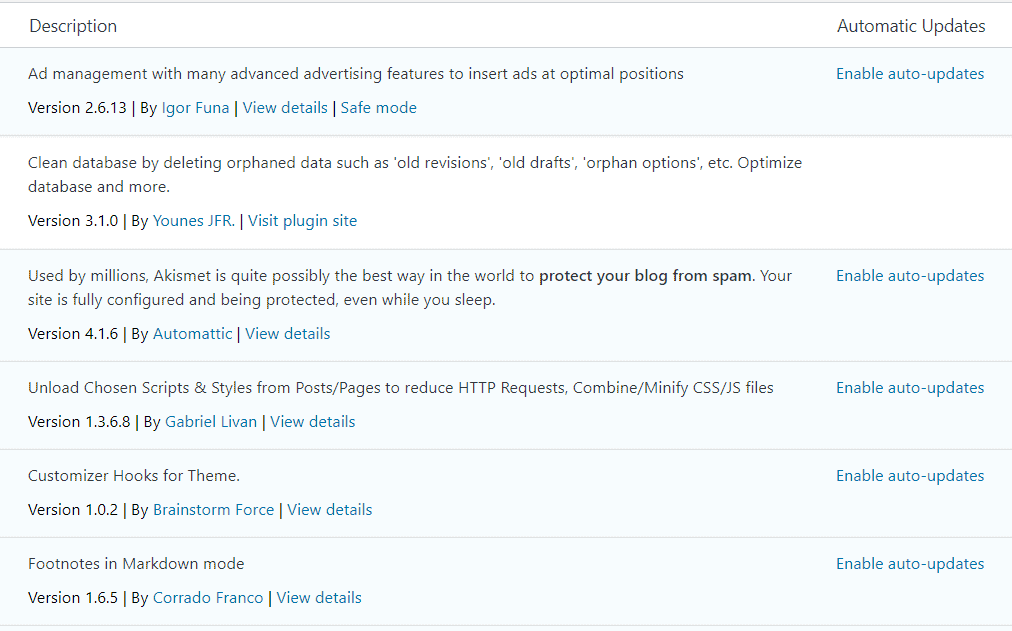
Unfortunately though, when a site is too customized, it’s hard to update it without running the risk of something breaking because of potential incompatibilities.
If that’s the situation you find yourself in, you may want to consider paring down your CMS.
Install an SEO extension
Category: Very, very basic SEO
Difficulty: Easy
Time needed: 10 min.
If you’re familiar with WordPress, you’ve almost certainly heard of “Yoast.”
Yoast is a free, robust extension that manages the majority of significant SEO elements.
A website that’s updated regularly and uses Yoast will generally have a solid technical foundation.
Yoast manages the following elements:
- Canonical tags
- SEO tags (title/description)
- Social sharing tags
- Sitemap.xml file
- Content optimization recommendations
- Structured data for articles
- Selective indexing
- And much more!
Adviso and the majority of our clients whose sites run on WordPress use Yoast.
An alternative to Yoast
Rank Math is another SEO extension that can easily be used in place of Yoast.
This new player (est. 2018) offers extra functionalities only available in the paid version of Yoast. These include the ability to optimize a page for multiple keywords and use structured data to optimize e-commerce pages.
The learning curve is similar for both extensions, and it’s easy to import configurations and tags from one to the other.
As a bonus, Rank Math supposedly has lighter code.
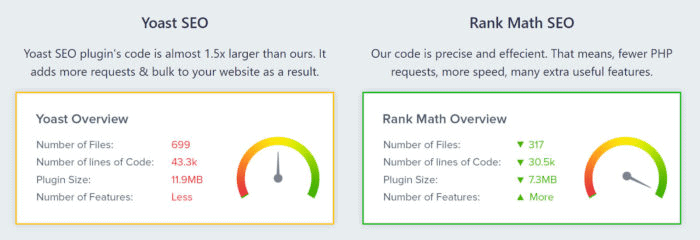
Redirect your useless attachment pages
Category: Noise reduction/SEO
Difficulty: Easy
Time needed: 2 min.
WordPress has the angering tendency to create a new HTML page for every image file you upload. These pages are unfortunately indexable and can pollute your search index. Make sure your SEO extension redirects these pages directly to the page the image is attached to.
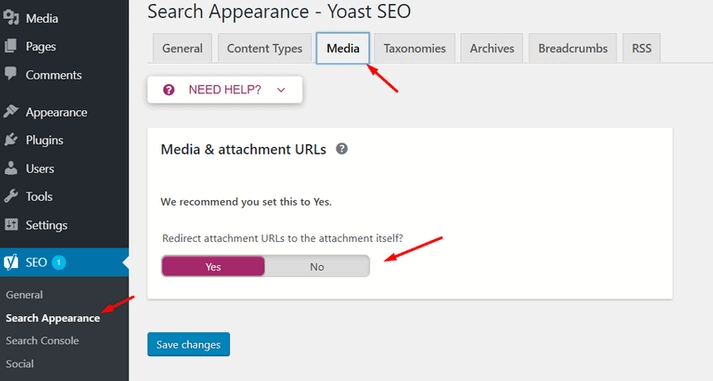
Optimize image compression
Category: Performance
Difficulty: Easy
Time needed: 15-20 minutes every 2-3 months
I’ve said it before and I’ll say it again – optimize your images!
The web is mostly consumed on mobile and all it takes is a single too-heavy image to tarnish your users’ experience.
Here are a few extensions you can use to optimize your images:
- Smush
- Resmush (smush is big in the world of image optimization)
- Shortpixel
- EWWW
- Imagify
- And many others
But if you want a more robust long-term solution, you might want to consider the option below.
Optimize your image distribution
Category: Performance
Difficulty: Average
Time needed: 30 minutes to 1 hour
Above and beyond the size of your images, there are a bunch of other optimizations you can implement to make sure your images load more efficiently.
An excellent free extension to optimize image distribution is Flying Images.
Key features include the use of a CDN (Statically), lazy loading and the automatic distribution of images in Webp.
Statistically is a free content distribution network that optimizes and distributes your images in the most appropriate size for your users.
Lazy loading allows you to defer the loading of images so that they only appear when they need to be displayed in your user’s browser window.
The Webp format is generally far less heavy than the classic PNG or JPEG.
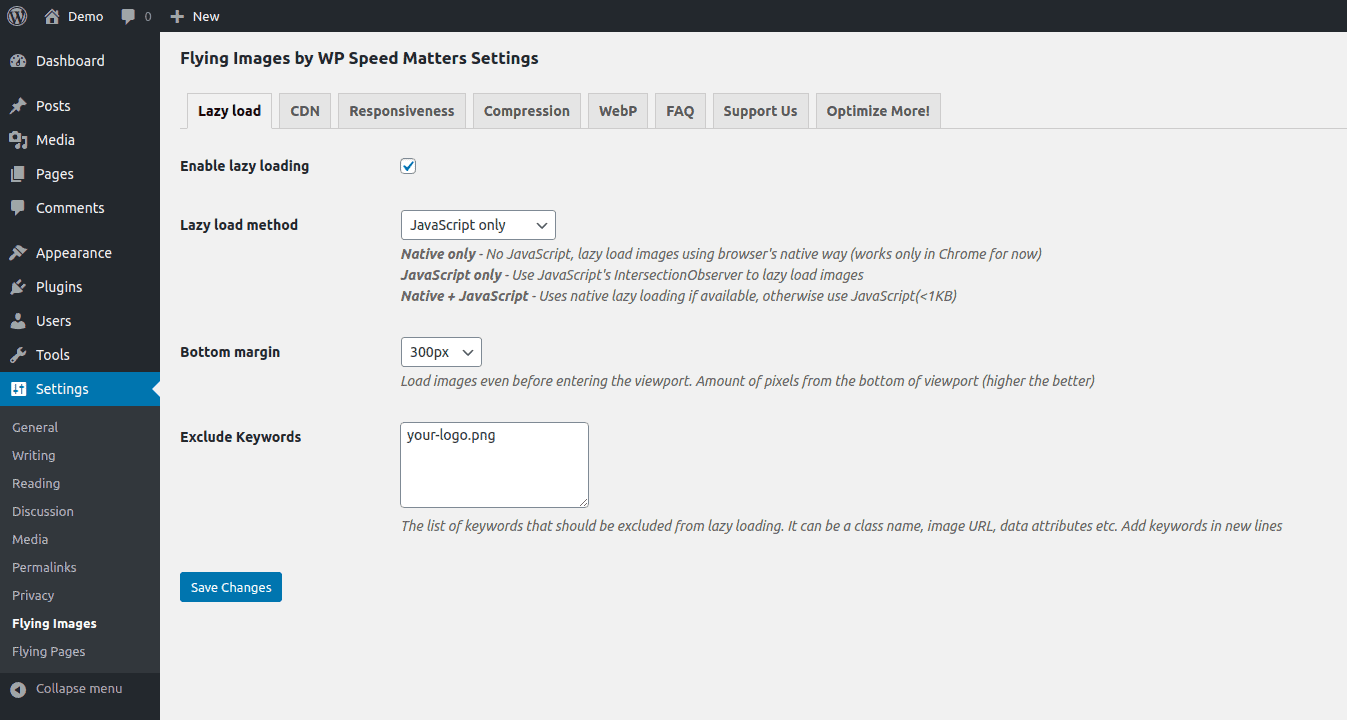
lying Images configuration options
A similar, but paid option for optimizing and distributing images is Cloudimage.
After testing both options, my preference is Flying Images, which is free and has more configuration options.
Tip: Avoid lazy loading for images above the fold. This can cause Cumulative Layout Shift.
Remove useless sections from your sitemap.xml
Category: SEO
Difficulty: Easy
Time needed: 30 minutes
The sitemap.xml file is used to submit your pages to Google to allow the search giant to more easily crawl and index your site.
If you are using Yoast or Rank Math, your sitemap should be found here:
adviso.ca/sitemap_index.xml
Too often, the index will contain empty or useless sections, like for example the attachments pages mentioned above. Use your SEO extension to remove these pages.
The more history a site has, the more likely it is that its sitemap will contain useless pages.
Improve performance by avoiding extensions that slow you down
Category: Performance
Difficulty: Average
Time needed: A bit of thought every month
I generally recommend avoiding using extensions like these, that consume a lot of resources:
Jetpack – All-in-one extension that is generally very demanding on small servers. You’re better off finding other extensions to replace the functionality you use with Jetpack.
WPML – The most popular extension for bilingual sites is unfortunately also one of the heaviest. By far. If you’re already using WPML, you can optimize your configuration to improve load speed. If not, TranslatePress or Polylang are better choices, with licenses running at around $120 – $200 per year.
Wordfence – Security and firewall tools like Wordfence can consume a huge amount of resources in order to protect your site. Instead choose a cloud-based security solution like Cloudflare (more info in point #10).
Unfortunately, extensions that dramatically slow sites down are more common that you might realize.
Defer or block your scripts from loading
Category: Performance
Difficulty: Advanced
Time needed: 1-2 hours of configuration
There are many extensions that can slow your site down, even on pages where they aren’t being used.
A solution like Asset Cleaner allows you to delay loading certain scripts, allowing your pages to load more rapidly.
Even more interesting is the ability to block scripts from loading for certain key sections where they aren’t needed.
For example, since I don’t have a table of contents on my home page, I choose not to load CSS or JS files that won’t be used.
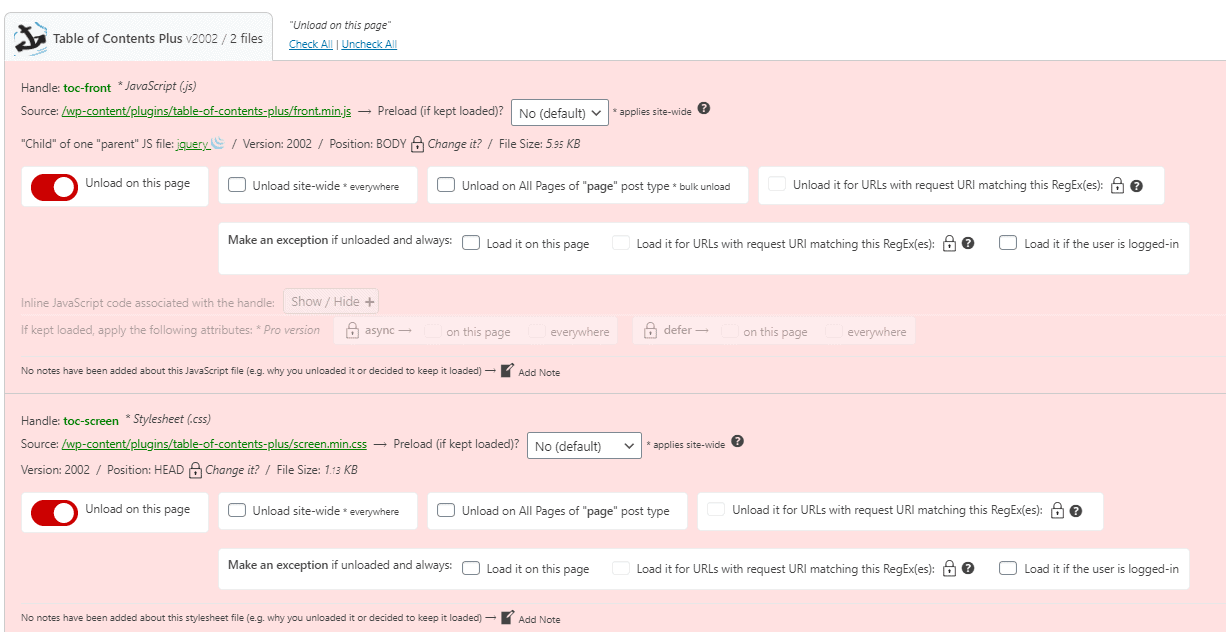
Remove functionalities you don’t use
Category: Noise reduction/Performance
Difficulty: Average
Time needed: 30 minutes
Several of WordPress’ default functionalities won’t necessarily be used by every website. If they aren’t removed, the files loaded by these native features can add weight to your pages.
These include:
- Comments
- Pingbacks
- Google maps
- Emojis
- Embeds
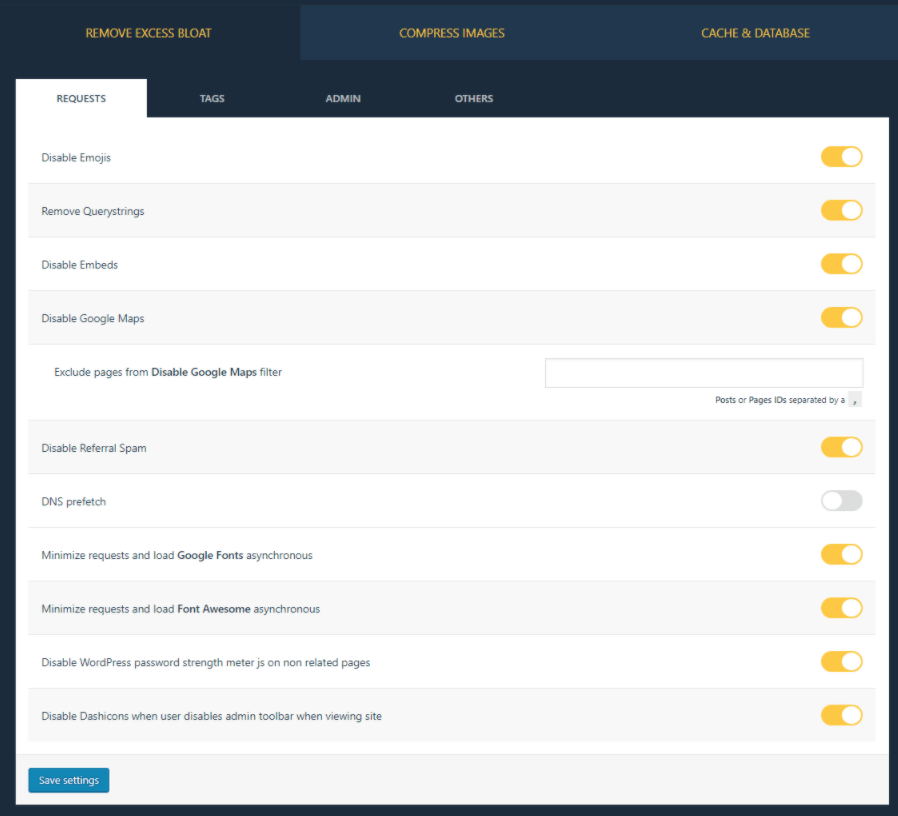
WP Disable (above) and Asset Cleaner are two extensions you can use to remove potentially needless features and improve performance.
Use a CDN | Advanced
Catégorie : CDN
Difficulty : Advanced
Time needed : Variable
Mentioned a few times in this article, a Content Delivery Network can allow you to collect, optimize and better distribute your resources. The majority of CDNs also offer the ability to improve tracking, performance and security.
Statically
Statically is a free option that integrates with WordPress, but this option is purely focused on the distribution of image, CSS, HTML and Javascript files.
Cloudflare
Cloudflare is the market leader, and the free version is very complete though it unfortunately doesn’t cover image optimization. (Psst. Use Flying Images with Cloudflare).
The more advanced features are generally accessible with a license that ranges from $20/month for a professional account to $200/month for an enterprise account.
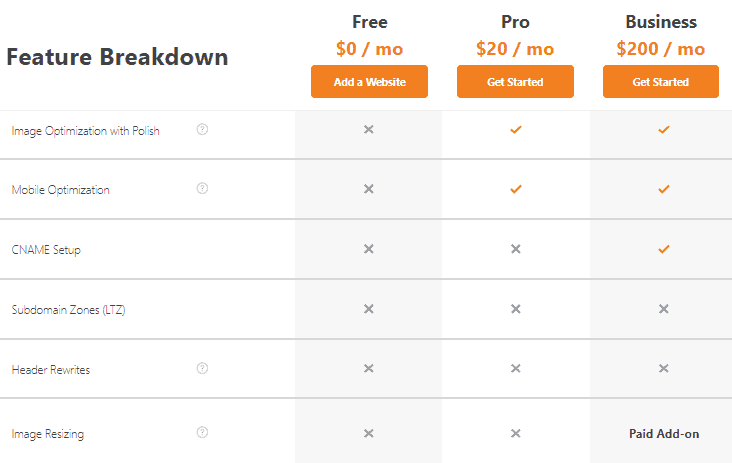
BunnyCDN
Bunny CDN is a serious Cloudflare competitor thanks to its low cost and excellent value for money. If you’re looking for the same advanced functionalities offered by Cloudflare but have a moderate volume of users, you could save a lot of money.
Keep your website simple and clean
Category: Common sense
Difficulty: A challenge
Time needed: Ongoing
Take the time to analyze your needs and build a robust foundation that won’t slow you or your team down in the future. What are your current irritants, what keeps you from being flexible?

Choose a theme that’s simple and gets updated regularly (Astra, Generatepress). Use Gutenberg or Elementor to replace your sliders and other obsolete extensions.
The beauty of WordPress is that there are always alternatives, as long as you know where to find them.
Stay informed about WordPress
Category: Continuous information
Difficulty: Consistency
Time needed: Often
Here are a few good resources to stay on top of the latest tips and trends:
- WPTavern – For all your news needs.
- WP Speed Matters – To help you optimize the speed of your website.
- WP Beginners – For all your questions and to find useful extensions.
For recommendations based on content creation and optimization I’d suggest:




